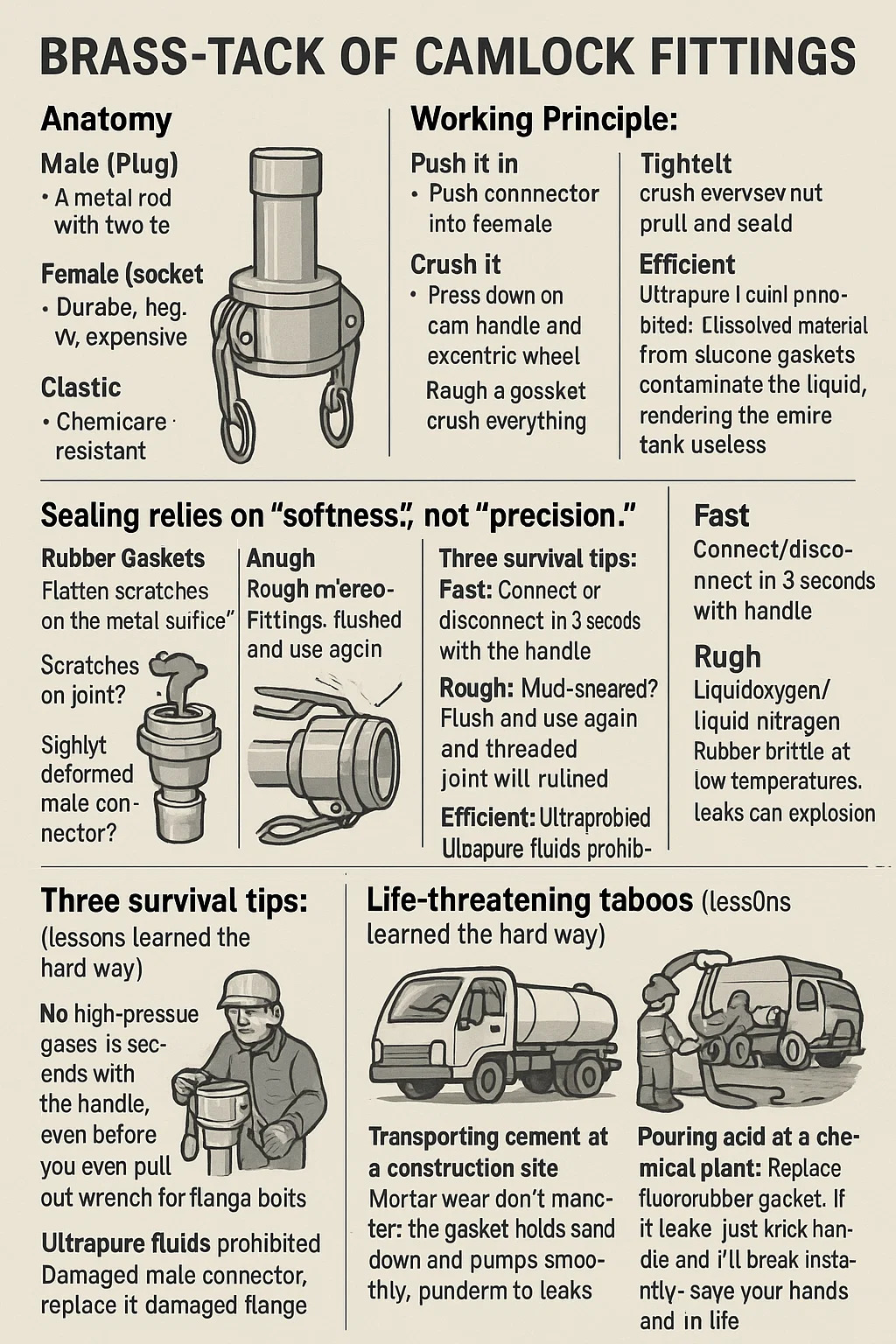Here's a brass-tack of camlock fittings:
1. Anatomy (See through this thing)
Male (Plug): A metal rod with two teeth. A rubber ring is inserted into the slot at the base of the teeth, resembling a beer bottle cap.
Female (Socket): An L-shaped slot milled into the inner wall, with a cam lever mounted on the outside—a complete "beast trap."
Material:
Aluminum: Light, cheap, but sensitive to strong acids.
Stainless steel: Durable, heavy, and expensive.
Plastic: Chemical-resistant, don't kick it.
2. Working Principle (simple to brutal)
Push it in: Plug the male connector into the female connector, and the teeth slide into the bottom of the L-slot (stuck crooked? Kick it in).
Crush it: Press down on the cam handle, and the eccentric wheel engages the male teeth, similar to the "click" of a suitcase buckle.
Tighten it tighter the more you pull: Vibration and bumps? The cam lock mechanism will actually tighten the lock.
3. Sealing relies on "softness," not "precision."
Rubber gaskets crush everything:
Scratches on the metal surface? Flatten and fill!
Grit on the joint? Wrap the rubber around it and seal it!
Slightly deformed male connector? Squeeze it into a patty and it'll still seal the leak!
Rough metal surface: Deep lathe cuts? No problem, the rubber is soft enough to be a universal putty.
4. Three survival tips:
Fast: Connect/disconnect in 3 seconds with the handle, even before you even pull out the wrench for the flange bolts.
Rough: Mud-smeared? Flush and use again, and the threaded joint will be ruined.
Efficient: Damaged male connector, replace it; damaged flange requires pipe cutting and re-welding.
5. Life-threatening taboos (lessons learned the hard way):
No high-pressure gases: Compressed air accumulates energy, causing the cam to explode like a cannonball when unlocked.
No liquid oxygen/liquid nitrogen: Rubber becomes brittle at low temperatures, and leaks can cause explosions. Ultrapure fluids prohibited: Dissolved materials from silicone gaskets contaminate the liquid, rendering the entire tank useless.
6. Classic Work Scenes
Unloading oil from a tank truck: Cam locks and jumper anti-static connections ensure smooth, bumpy journeys without leaking a drop.
Transporting cement at a construction site: Mortar wear doesn't matter; the gasket holds the sand down and pumps smoothly.
Pouring acid at a chemical plant: Replace the fluororubber gasket. If it leaks, just kick the handle and it'll break instantly—saving your hands and your life.


 英语
英语 俄语
俄语












